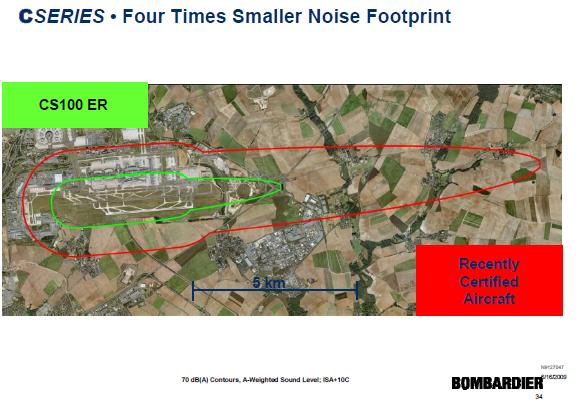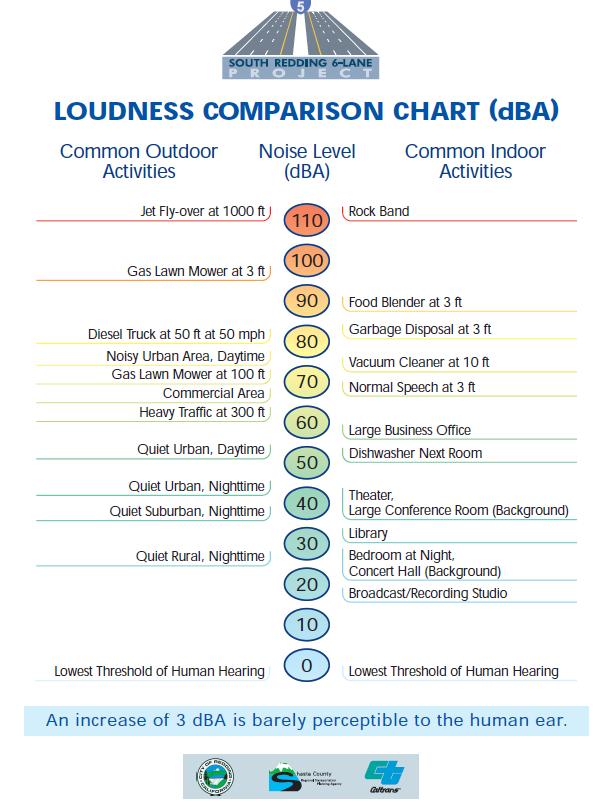Leeham News and Analysis
There's more to real news than a news release.
Leeham News and Analysis
- At long last, Boeing appears near certification and EIS for 777X
- Air India Flight 171 Preliminary Crash Report Is Unclear Regarding Pilot Actions
- Bjorn’s Corner: Air Transport’s route to 2050. Part 30.
- It’s official: MTU’s engine leader named CEO of Airbus Commercial from Jan. 1; future of Open Fan and A220-500 shifts to him
- Embraer E2: Where will the orders come from?
Noise contours for the Bombardier CS100 and the Porter Airlines expected order
The news that Canada’s Porter Airlines is the Unidentified North American customer that signed a Letter of Intent for up to 30 Bombardier CSeries for use at Toronto City Airport sparked a lot of noise (pun intended).
Late yesterday The Wall Street Journal reported that Porter will announce its order tomorrow.
Key to the order is the fact that BBD and engine provider Pratt & Whitney promise a low noise footprint and just 70 decibels approaching the airport. Toronto City Airport is a highly noise-sensitive airport.
As yesterday’s post about all this noted, Porter and the OEMs will argue the CS100 is no louder than the Bombardier Q400 now serving the airport. This leads to a small noise contour, or foot print, as illustrated in this BBD chart:
.
The Ft. Lauderdale airport (Broward County) has this set of Airport Noise Contour descriptions.
But what does this mean to the average ear? There are several tables on the Internet that give examples. AirInsight has a chart here that equates specific aircraft to common noises. This chart below also gives some examples of dBA levels.
.
The Porter order will almost certainly prompt a local political row, according to the Financial Post’s aerospace reporter, as suggested in his own Tweets that we reproduced last night.
Share this:
- Click to print (Opens in new window) Print
- Click to email a link to a friend (Opens in new window) Email
- Click to share on X (Opens in new window) X
- Click to share on Pinterest (Opens in new window) Pinterest
- Click to share on Facebook (Opens in new window) Facebook
- Click to share on WhatsApp (Opens in new window) WhatsApp
- Click to share on LinkedIn (Opens in new window) LinkedIn
- Click to share on Tumblr (Opens in new window) Tumblr
- Click to share on Reddit (Opens in new window) Reddit
Related
Category: AirInsight, Bombardier
Tags: AirInsight, Bombardier, CS100, CSeries, Porter Airlines




And the “Recently Certified Aircraft” is an A380?
The problem is within the way how the footprint is calculated. A faster but louder aircraft may have the same footprint as a slower and more quite aircraft. In case the 70 dB(A) contour is Effective Perceived Noise Level (EPNL).
They must have used data from an older jet at 1000ft. I could see a B-52 or KC-135 (not re-engined) being louder at 1000ft than my lawnmower at 3ft, but a modern airliner, no way.
I grew up near a SAC base and our windows would rattle and conversations would pause when the bombers flew over the city. Granted, they were probably flying higher than 1000ft above my house, but not much. The old 727’s and 737’s could have competed with my lawnmower as well.
I’ll believe the 70 dBa claim when I hear it.
The airport above isn’t Toronto City Airport. It’s Charles de Gaulle. The same green line in Toronto is inside a housing area.
Contour illustration wasn’t intended to be Toronto or any specific airport; it’s an illustration of the footprint differences.
@MHalblaub, you are correct in identifying CDG as the airport in the photo. The green line would not, however extend over a mixed residential/commercial area in Toronto. For scale purposes at CDG, 08L/26R measures 13,829′. 08/26 at YTZ is 3,988′. It will no doubt be required to extend the runway at YTZ for the C Series, however the aircraft will not have any requirement to extend their sound profiles over mixed use lands given the more than 4 miles of lake from the end of the runway (assuming westerly flight) to the nearest shore.
I wasn’t talking only about housing in direction of runway 08/26. I was talking about the housing parallel to runway 08/26 just 500 m away.
Personally I would prefer a jet noise over a prop noise. The CS100 is according to my data much more quite than a Q400. Any building protects your ears far better against high frequencies than against the very low frequencies a turboprop or a Harley-Davidson makes.
For the inhabitants the decision by Porter to buy CS100 is good news but from published data you can’t derive that. I was just amazed about published data.
It is certainly NOT Charles de Gaulle, 2 runways are missing!
Who cares what airport the illustration shows? The point is about noise footprint. Let’s get back to the relevant issue.
Hamilton
The contour normally are being calculated for MTOW. The Porter CS100 would be the non-ER versions and probably would not reach their MTOW anyway, so the actual 70dB noise areas for flights out of YTZ might be significantly smaller.
Plus, you could use special climb profiles with a very early cutback.
Beside the EPNL, the frequency range is important.
Propellers can make very nasty sound mix.
The aircraft has not made its first flight yet… so far all numbers and footprints for the CS100 is fabricated. This kind of practical information should be based on actual measurements, not speculation.
The main noise source is already measured: the engines. The noise is 20 dB less than allowed according to stage 4 standard. All footprints are “fabricated” because no footprint is measured. The fuel efficiency is also just calculated.
Pingback: It’s official: Canada’s Porter selects CSeries for difficult Toronto City Airport | Leeham News and Comment
“Key to the order is the fact that BBD and engine provider Pratt & Whitney promise a low noise footprint and just 70 decibels approaching the airport.”
This is the noise coming in to land. Takeoff would be MUCH louder. Curious that they don’t reference that.
The Island Airport constraint is this:
“all those propeller-driven aeroplanes exceeding 5700 kilograms maximum
takeoff weight other than those aeroplanes classified as STOL aircraft in
accordance with the definition in Chapter 7 and Attachment C thereto of
ICAO Annex 16, which generate a noise level in excess of 84.0 EPNdB on
takeoff (flyover), or in excess of 83.5 EPNdB on sideline at takeoff (lateral
to the flight path) or in excess of 92.0 EPNdB on approach, all calculated
in accordance with the procedures set out in ICAO Annex 16, Chapter 5
and Appendix 2”.
Porter and Air Canada’s Q400 breach this provision on two of three criteria – as admitted by the Toronto Port Authority, the Q400 emits 84 on lateral and 93.1 on approach.
They have simply ignored the constraint.
Do we know what the noise emissions using this calculation are for the CS100?
What are the stats for the CS100’s noise?
According to Bombardier, the total of the three noise parameters (255) is lower than the total for “average turboprop” (about 256).
But the Q400 total is 245.1. Even with that, the Q400 breaches two of the three parameters.
It does seem that the “whisper jet” is louder than the Q400 – 255 v. 245. On its maker’s figures.
How does it then “meets the noise restrictions at the airport”?
Does anyone have a breakdown of the total figure for the CS100 by takeoff(flyover), sideline (lateral) and approach?